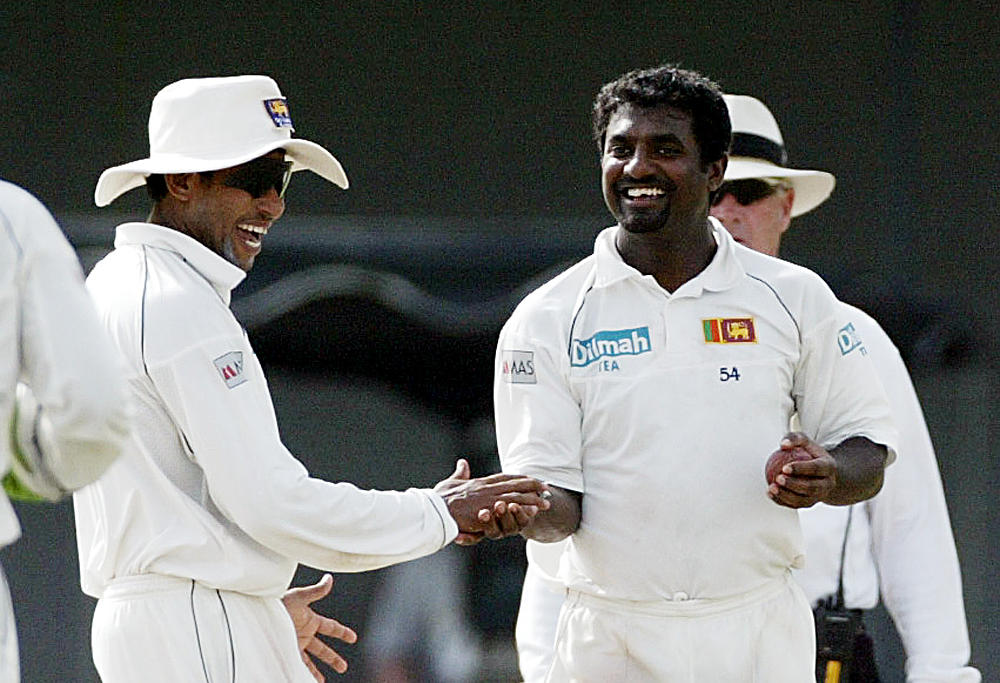Travis Head obliterates RCB in record breaking century... and just wait for the celebration!
RCB have suffered a massive HEAD-ACHE after Travis Head smashed the fastest century by an SRH player in just 39 balls, as they amassed…
Offspinners. Innocuous chaps, really.
They amble in, twiddle the ball with their fingers in the hope that it will land in that rough patch outside that off stump, attempting to spin it back to breach the batsman’s forward defence, effectively bowling him ‘through the gate.’ That’s the basic idea anyway.
Since then, the modern-day finger spinner has truly come into their own. Gone are the days when the unassuming offie was a one-dimensional bowler used to staunch the flow of runs, or just something a part-timer bowled. The likes of Muttiah Muralitharan, Harbhajan Singh and Saqlain Mushtaq breathed new life into this stagnant craft, and offspin was revived as a bowling style that came to be feared and respected in all levels of cricket.
Despite this, the general perception of fingerspin in Australia still receives a bit of a bad rap, perhaps because it is so common and easy to bowl. Most offspinners have generally underachieved Down Under too, adding further negativity to this craft.
While offspin is simpler to bowl than its more glorified brother legspin, becoming one of high quality takes work, skill, patience and plenty of practice and correct coaching. And like with any skill, it starts with understanding the basics.

Sri Lankan bowler Muttiah Muralitharan (AP Photo/Eranga Jayawardena)
Imparting spin
If you’re a spinner your job is to spin the ball, on any wicket. No excuses. However, in state and international cricket there are far too many offies who no longer fulfil this basic requirement of their role.
It’s well known that the more revolutions you apply on the ball, the greater your area of danger on the pitch. Drift, the offspinner’s elusive deceptive weapon, is also only achieved through imparting as many revolutions as possible.
Extracting prodigious spin doesn’t end there. You must be able to land the ball on the seam consistently to achieve that delicious dip, turn and bounce. Land the ball on the leather side and it will just skid or go straight on.
Observe the way Murali, Harbhajan and even England’s Graeme Swann spun the ball. They applied so much spin that their bowling arm would recoil or corkscrew wildly upon release, such was the effort they put in to each delivery.
The ideal bowling action
A high arm action, assisted through generating small mechanical levers with the body, is the best way to deliver offspin. The higher the hands go, the taller the offspinner will stand at the popping crease, which will then allow him to go ‘up-and-over’ the line to deliver a well flighted offbreak.
The shoulder and the front-foot play an integral part in generating that loop which all offspinners aim for. The front-foot must act like a pivot which allows the offspinner to twist his body upon release, giving maximum opportunity to spin the ball.
The run up should be in small steps; a light jog or fast walk to the crease is sufficient for the offspinner to gain the momentum he needs for each delivery. He must stand tall at the crease and not slouch upon release, as this increases the chances of dropping it short.
Front-foot no-balls should be non-existent for the offspinner. If they aren’t, then he is rushing his delivery stride, and needs to slow down.
Daniel Vettori, New Zealand’s greatest left-arm orthodox spinner, had one of the best classical bowling actions for an offie. Rhythmical, elegant and delivered with a high arm action, his bowling style is something every youngster should study and emulate.
Sri Lanka’s Rangana Herath also has an excellent action too; for a little man he always stands tall and upright at the crease, allowing him to bowl that perfect, teasing length consistently on any surface.

Are Sri Lanka on the up again? (AP Photo/Eranga Jayawardena)
The variations
Spin bowling should be kept simple and when it comes to variations you really only need two; your stock ball and one that goes straight or in the opposite direction.
Nowadays offies have become too technical inventing all sorts of unusual deliveries like the carrom ball (thanks Ravi Ashwin), the ‘Jeff’ ball (good try Nathan Lyon) and the mysterious teesra, a cousin of the doosra delivered with a bit of undercut and flatter trajectory (courtesy of Saeed Ajmal).
They all have mysterious, unusual names but essentially do the same thing; they go straight.
All of this confusion can be avoided however if we go back to the grandfather of all straight and deviating deliveries; the arm ball.
This is really the only other variation a classic offspinner needs. Forget the doosra. Only a genius can bowl that. Graeme Swann took over 250 Test wickets at a tick under 30 without ever bowling a doosra, so it can definitely be done.
Perfect your offbreak, use the crease to create different angles of trajectory and natural variation, slip in the odd arm ball, and very soon you will be taking wickets by the bucket-load.

England spin bowlers Monty Panesar (left) and Graeme Swann. (AAP Image/Dave Hunt)
The mindset
The old adage is certainly true; cricket is a mental game and it is here where a successful offspinner truly flourishes. You can have all the skills at your disposal, but if you’re not smart enough to outwit your opponent then anything you bowl will be made obsolete by an attacking batsman.
Don Bradman knew how dangerous an offspinner could be, to the point where in his brilliant coaching book The Art of Cricket, there is a whole chapter dedicated to educating the young cricketer on how to bat against a hard-spun offbreak, nothing else. Incredible stuff.
Patience is a virtue, and great offspinners bathe in it. You need time to set up the batsman, plant those seeds of doubt in his mind, and generate that tempting loop above the eyeline to draw him into your trap.
Bishan Bedi and Erapalli Prasanna, two legends of India’s famous spin quartet, were masters of this old-school style of offspin bowling.
Using only the crease and their subtle variations, they bowled with immense guile and deception that a batsman could not decide whether to go forward or back to any delivery, such was the indecision caused by the dip and drift they imparted on the ball.
When bowled with discipline and control, the humble offbreak can prove to be a highly versatile and devastating delivery in the offspinner’s armoury. Apply some overspin, and the ball will drop suddenly and bounce sharply.
Add some sidespin and a little undercut, and on a cracking pitch the ball will spit at you like a vicious cobra. And the best part? It’s always subtle. Natural variation is the key.
A cunning offspinner plays mind-games with the batsman. Ball after ball, he asks plenty of questions. Will it turn? Will it go straight?
Are you good enough to play against the spin? Don’t give my man at short-leg a simple catch now, will you? It’s endless. Even the greats suffered at the hands of a wily offspinner. Ponting will tell you.
Never underestimate the value of a good offie. Yes, everyone can bowl it, but very few will master it. Show them some love today.